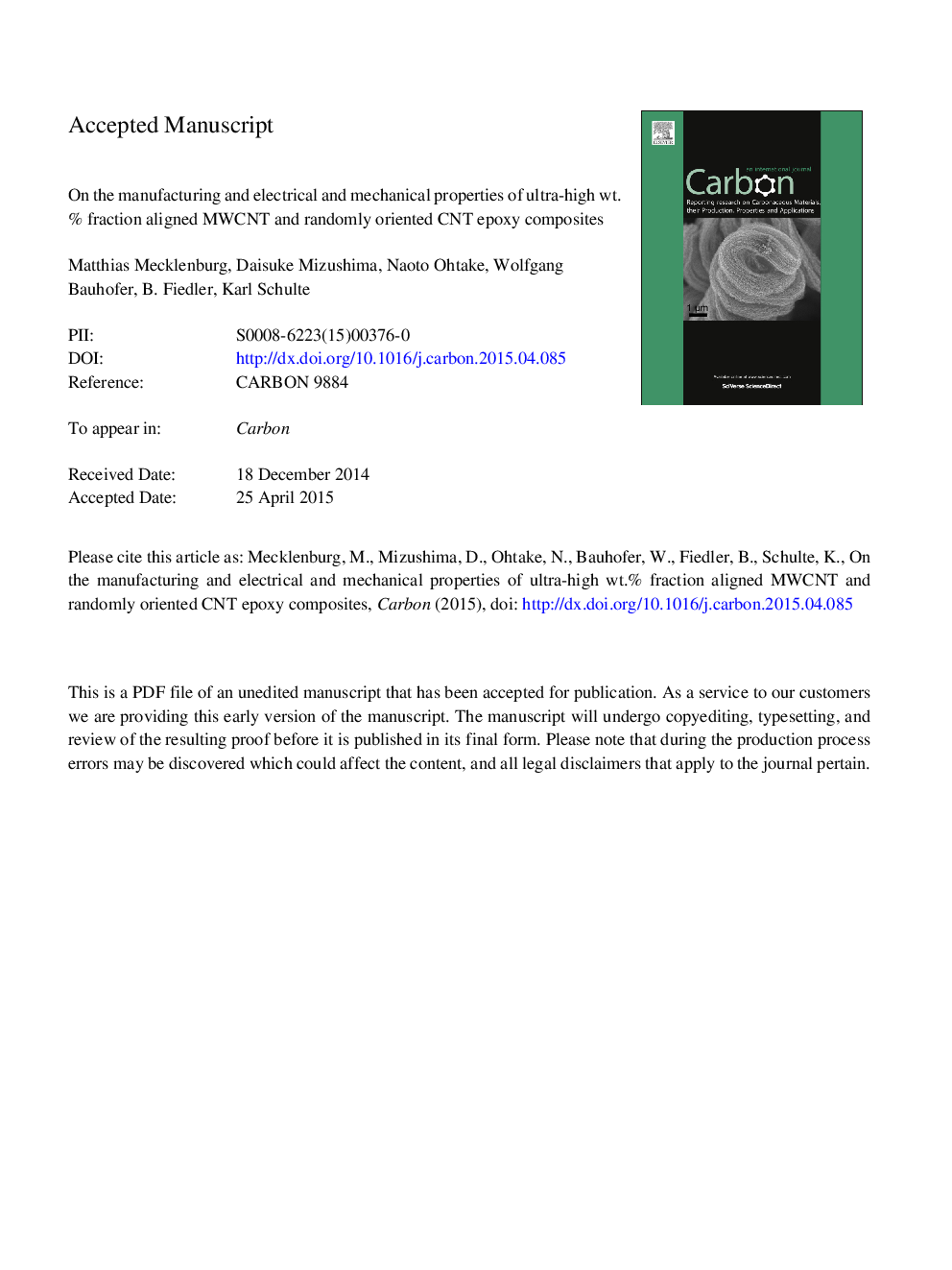| Article ID | Journal | Published Year | Pages | File Type |
|---|---|---|---|---|
| 7851716 | Carbon | 2015 | 32 Pages |
Abstract
The effect of CNT orientation on electrical and mechanical properties is presented on the example of an ultra-high filler loaded multi-walled carbon nanotube (68 wt.% MWCNTs) epoxy-based nanocomposite. A novel manufacturing method based on hot-press infiltration through a semi-permeable membrane allows to obtain both, nanocomposites with aligned and randomly oriented CNTs (APNCs and RPNCs) over a broad filler loading range of â10-68 wt.%. APNCs are based on low-defected, mm-long aligned MWCNT arrays grown in chemical vapour deposition (CVD) process. Electrical conductivity and mechanical properties were measured parallel and perpendicular to the direction of CNTs. RPNCs are based on both, aligned mm-long MWCNTs and randomly oriented commercial μm-long and entangled MWCNTs (Baytube C150P, and exemplarily Arkema Graphistrength C100). The piezoresistive strain sensing capability of these high-wt.% APNCs and RPNCs had been investigated towards the influence of CNT orientations. For the highest CNT fraction of 68 wt.% of unidirectional aligned CNTs a Young's modulus of E|| â 36 GPa and maximum electrical conductivity of Ï|| â 37·104 S/m were achieved.
Related Topics
Physical Sciences and Engineering
Energy
Energy (General)
Authors
Matthias Mecklenburg, Daisuke Mizushima, Naoto Ohtake, Wolfgang Bauhofer, Bodo Fiedler, Karl Schulte,
